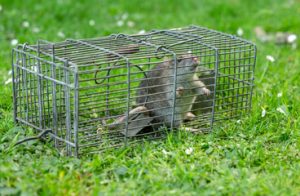Mice can destroy stored goods and contaminate attic insulation with urine and droppings. They also spread diseases such as hantavirus and salmonella.
Professional Mice Removal Texas specialists start the rodent removal process by identifying where mice are living and what species are responsible for the infestation. This is done by conducting a property inspection.

Inspection
Whether you’ve seen droppings or heard scratching, gnawing sounds, or other signs of rodent activity, your first step to a mice infestation resolution should be a professional inspection. The specialist will assess the problem, searching for places where rodents are nesting or hiding. This may involve crawling in tight spaces like attics or under houses to locate nests and small entryways.
During this initial visit, you’ll likely want to organize and declutter bedrooms and living areas so the pest control expert can see and access the spaces they need to inspect. This is especially important because it reduces potential rodent hideout spots and makes the process more effective.
A pro will use the inspection to determine how many rodents are present, which species is responsible, and where the nests and main areas of activity are located. Identifying these factors helps the technician to develop a more effective trap or poison placement strategy.
In addition, the pro will check pipes, roofs, and windows for leaks or moisture damage that can encourage rodent activity. Finally, he or she will use the inspection to find cracks, crevices, and other entry points that need to be sealed to prevent future rodent infestations. This process is usually included in the overall cost of the service. Some companies also offer exterior exclusion services as part of their pest control procedures.
Detection
Mice carry harmful bacteria and viruses that can contaminate food, surfaces, and bedding materials with their urine, droppings, and shed fur. Their constant gnawing can also damage electrical wiring, insulation, and wood structures, creating potential fire hazards and expensive repair bills. Plus, their dander and hair can trigger asthma and allergies.
When a mouse problem arises, you need to act quickly to protect your family’s health and safety. Fortunately, there are ways to prevent mice infestations from developing in the first place.
Regular home inspections can help you identify warning signs such as gnaw marks, droppings, and unusual odors. You should also regularly sanitize areas where food is prepared and store pantry items in airtight containers. Additionally, reducing clutter and properly storing trash cans can reduce hiding places for mice.
When you call a professional for a mouse inspection and removal service, they’ll conduct a thorough examination of your property to find the source of the infestation. A pro will look for entry points, including cracks, holes, and crevices around doors, windows, and vents. They’ll also check for rodent burrows in the foundation and soil. Once the problem is identified, they’ll seal these gaps using materials like steel wool and caulking. They may also recommend installing door sweeps and adding weather stripping to further enhance your home’s defenses against rodents.
Treatment
Depending on the severity of the problem, the pest control pro will recommend immediate changes to help prevent mice infestations in the future. These may include switching to airtight containers for food, cleaning cooking areas thoroughly, and removing attractants that mice are drawn to, such as scraps, compost, and plants.
The pest control expert will also look for signs of gnaw marks and grease on walls and around the water heater, and check for rodent droppings. The exterminator can then determine how the mice entered the home, what species are behind the infestation, and where the nests are located. This information will allow the pro to implement more effective traps and baits that address the root cause of the problem.
Mice often enter homes through holes chewed out by other animals or by the mice themselves. In addition to sealing any obvious entry points, a good mouse control company will apply repellents to deter the rodents. These can be chemical or scent-based and last a few weeks to months. Common choices for scents include peppermint oil, clover oil, eucalyptus, and cayenne pepper.
For long-term protection, pest control experts may suggest a quarterly treatment plan that includes inspections for new activity and reapplication of repellents. During these visits, the exterminator can ensure that all entry points remain sealed.
Prevention
Mice invade homes in search of food, shelter, and breeding sites. They contaminate food with their urine and droppings and can cause significant damage by chewing through electrical wiring and wooden structures. They can also spread harmful bacteria and diseases, including Salmonella and hantavirus.
Prevention is key to keeping mice away from homes and businesses. The first step is to seal entry points. Mice can squeeze through openings as small as a quarter inch. Inspect doors and windows for cracks and gaps, and promptly repair them with caulk or weatherstripping. In addition, trim shrubs and trees away from the home or building and store firewood at least 20 feet away from the house or garage.
Indoors, store food in airtight containers and clean up spills and crumbs immediately. Keeping cluttered spaces like attics, basements, and storage areas decluttered can help prevent mouse infestations as well.
Regular professional inspections can also keep mouse populations under control. By inspecting the property regularly, pest control professionals can identify a problem early and implement preventive measures before a large population takes hold. Educating employees on the importance of reporting signs of mouse activity (like gnaw marks or scurrying noises) can further reduce the risk of an infestation. By teaching staff to report even minor symptoms, a restaurant can quickly intervene before a mouse problem gets out of hand.